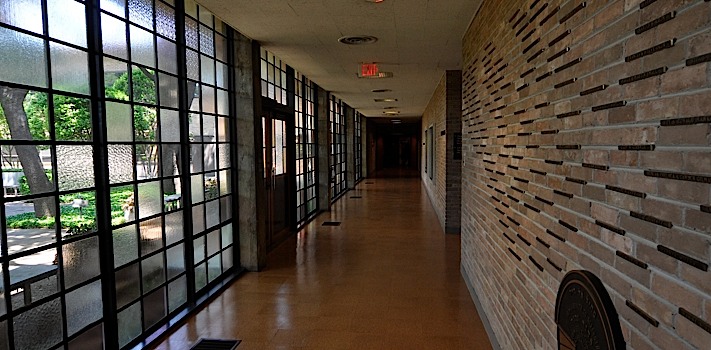Temple EmanuEl
Completed in 1957, the Temple EmanuEl became the largest, most expensive, and most detailed synagogue of Meyer’s religious architecture repertoire.
Synagogue Architecture of Howard Meyer
Finessing Modernism in Religious Architecture
Having worked on two other synagogues, Teferet Israel Synagogue (1938) and Temple Beth El (1938-48), Howard Meyer’s efforts in religious architecture reached their pinnacle through the creation of Temple EmanuEl. Completed in 1957, the Temple EmanuEl became the largest, most expensive, and most detailed synagogue of Meyer's religious architecture repertoire.
Temple EmanuEl reveals a sense of maturity in Meyer’s architecturally aesthetic through a culmination of his bourgeoning architectural experience and emphasized effort of collaboration on the project. Combing the efforts of structural engineers, landscape architects, lighting consultants, artists, and additional architects developed an architectural masterpiece that alone each could seemingly not have conceived. Consequently, Howard Meyer’s Temple EmanuEl achieves a resolutely cohesive international building within variety that lacks a “signature” appeal.
Comprised of discrete units, the massing of Temple EmanuEl exalts the series of interior programs. Through the chapel, sanctuary, the hall, offices, entertainment, meeting spaces, and a school, the forms clearly express the interior functionality of the building. Contrasting the seemingly sterometric forms of Temple EmanuEl, the encapsulated green spaces and arcaded garden create areas of retreat and reflection similar to what Meyer implements in the interior program. These enclosed courtyards provide an organic connection and a feeling of sanctity due to their positioning throughout the built environment. Providing division between the exterior inhabitable space and the interior of the temple is a glass-partitioning device. The playful nature of the varying textures of the glass panes allows for dappling and diffusion of light into the corridors. This natural lighting technique creates a unique ambiance that emanates the religious nature of the building.


